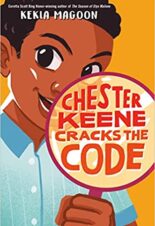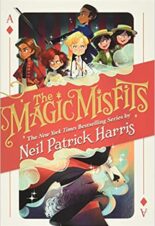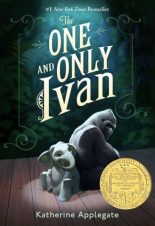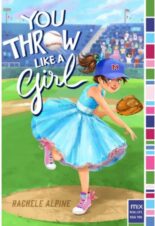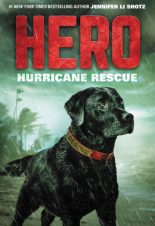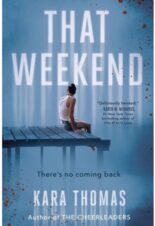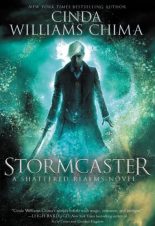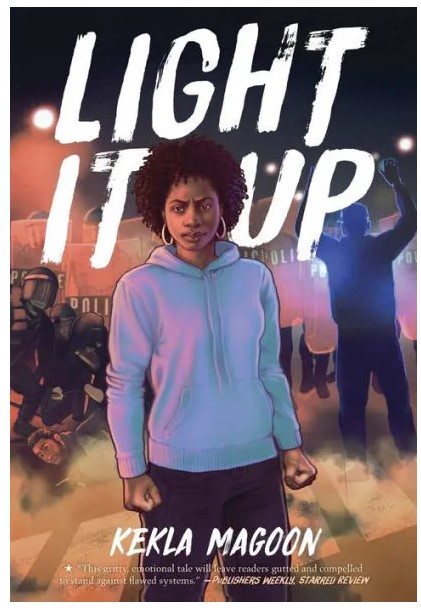
Buy This Book Buy This Series
Other books by Kekla Magoon
“Black power is about achieving equality. White power is about continued dominance. This isn’t hard to understand. Study your history,” Jamal Howard. –Light It Up
Light it Up
by Kekla Magoon
AR Test
14+
Score
3.7
368
Told in a series of vignettes from a myriad of points of view, Light it Up details a community’s reaction to a police officer killing a thirteen-year-old Black girl. An outraged city demands change, but quickly the outside world, and some white nationalists, take notice. As tensions escalate between the citizens of Underhill, and as the white nationalist group White Out arrives in the city ready to counterprotest, the lives of the residents are thrown into further disarray.
Light it Up is the second book in her series, coming after How it Went Down, which is also about the killing of an unarmed Black teenager in the same community. It is not necessary to read How it Went Down first, but there are overlaps between the fictional setting and the characters. Each book makes sense on its own, as the focus is on different tragedies that happen to different characters.
Magoon’s book takes place in a fictional city, but the unarmed killing of Black people in the United States is real, and she heavily borrows from real-life situations to bring her narrative to life. Magoon mentions the names of Black people killed by police in the United States including Michael Brown, Freddie Gray, and Martin Luther King Jr. She also includes a fictional white nationalist group, White Out, that is heavily based on real-life groups, and the KKK also makes a brief appearance. These moments serve to show how close her narrative runs along our reality.
Light it Up primarily tackles conversations about race relations in the United States from a variety of perspectives. Magoon addresses the nuances through many different points of view, including from a little girl who only speaks in simple poems, the daughter of a police officer, local nonprofit organizers, a gang leader, and many more. Each piece tells part of a larger story about the Black girl who was killed, but the lives of the other characters also shine through. Although this story is a tragedy at its core, it’s also about a community fighting the same fight day after day, and doing as much as they can to live somewhat normal lives.
There are also segments of the book that show the scripts from news broadcasts and social media comments, which brings in extra context from outside the city of Underhill and paints an even broader picture of the conversations surrounding police brutality and racialized violence. Light it Up takes a stance that is clearly shown in one news segment in particular. A guest tries to justify the viewpoints of white supremacists, saying that their views are equally valid, and the news commentator points out, “The minute you accept the premise that intolerance is a valid point of view, you lose freedom.” This is a succinct look at one of the book’s main themes.
Light it Up has mature content, including heavier language usage, violence, and sexual suggestions than some other young adult novels; however, its themes about race relations and community are powerful and certainly worth reading about. Additionally, most of the characters, unless otherwise specified, are college students or adults. Readers should take note that extreme bigoted language is used, but in context, the language shows the reality of white nationalists in the United States. This book is important to read because it helps illustrate the many facets of racism, and it does so in an intelligent and empathetic manner. There is not a happy ending after a child is killed, and the community can only do its best to grieve and continue the fight for a better home, despite the terrible obstacles. This is not a joyful occasion and the only way out is through.
Sexual Content
- The characters in this book engaging in sexual content are exclusively adults.
- One character, Jennica, used to be in a relationship with a man named Noodle, and he still comes around her place sometimes. Jennica describes how Noodle says, “‘Hey, gurrrrrl.’ He drags the word out so long it sounds dirty.” When she rebuffs him, he says, “I wanna keep doing you.” Jennica also mentions that what she misses about him “has nothing to do with sex.”
- At another point, Noodle texts Jennica, “You look hella sexy in that apron.” Jennica is not amused.
- While drunk at a party, Noodle sexually assaults Jennica. Jennica narrates, “My back is against the wall and Noodle presses up against me with his whole body. His hands push up my skirt. His mouth is on my neck, my chest. When I try to wriggle away, he takes hold of my wrists, pinning them beside my head.” After a page, he is stopped by a man named Brick, whom Jennica then kisses despite Brick saying no several times. Jennica notes, “When our mouths meet, I taste salt and beer and breath. It’s one quick moment, or it lasts a hundred years. He tears his face away.”
- While she is drunk, Jennica makes a sexual pass at Brick. Jennica notes that Brick pushes her back a step, but she also notes, “But his eyes say different. His fly says different.” Nothing happens between them. Later, she articulates her attraction, saying, “[Brick’s] muscles. I’m kinda turned on and I hate it because it reminds me of last night. Of Noodle’s hand going between my legs.”
- Brick notes that he can have “any woman [he] wants.” He says, “I could lose myself in [the party], find some honey to wriggle against me, soft and warm. The one in the hot-pink mini skirt. Damn. The one with the shaved head and earrings like Olympic rings.” This is the extent of his detailing of his sexual desires.
- Community organizer Zeke is talking to community volunteer Kimberly at the community center as folks are seeking shelter from the police outside. Zeke gives Kimberly a blanket and notes, “She smiles up at me. So pretty. Sleepy eyes are kinda sexy, I guess.”
- It is insinuated that a character named Melody has sex with Brick. The only description of this is from Melody, who remembers, “my memory rings with the sensation of his muscles against me. His breath on my cheek. The quick, hard rhythm as we rise together. The way his arms wrap me tight as we lay together. His sweet whispers.”
- Brick and Melody have sex again. Brick’s usual dating method is: “We screw, we snuggle, then we go our separate ways. No hang-ups. I sleep careful. I sleep smart. No drama.” He says this as Melody wakes up in his bed. Brick sees Melody, “her shirt is off and the covers are pulled up right underneath her excellent rack…She’s right there, and willing, and it feels good.” They have sex again that morning, though no further details are given.
- Kimberly and Zeke are attracted to each other. Kimberly mentions that Zeke “is fine.” Zeke mentions that Kimberly “is fine. Can’t tear [his] eyes from that big, sexy behind of hers. Why is she wearing cute pants like that to the office? Nobody needs to look that good while filing correspondence.”
- Kimberly likes Zeke, but she insinuates that she may have had a relationship with another man that they mutually know. Kimberly says, “Zeke can’t ever know what happened between me and Al. Reverend Sloan. The senator.” She doesn’t elaborate about what happened further.
- Senator Al Sloan has a history with Kimberly, and she doesn’t like how he seems to speak in double-entendres. Kimberly notes that when he says, “I still think about that week,” she understands it as him saying, “I wouldn’t mind getting in your pants this time, if you’ll let me.” Kimberly manages to rebuff him at each opportunity.
- Kimberly and Zeke kiss. Kimberly describes, “His lips are soft. It’s not unpleasant. But I don’t know what to do… My hands find his fingers. His tongue plunges in and out and I try to move mine in response.” Kimberly explains to Zeke that she’s never had sex before, and after a couple of pages of discussion, it is insinuated that they do have sex, but nothing is shown. The sequence lasts for several pages.
Violence
- The book’s central discussion is about police officers killing unarmed Black people. The characters reference real life examples listing, “Look at Watts in ‘65, look at LA after Rodney King, Ferguson after Michael Brown, Baltimore after Freddie Gray.” Later, students at a demonstration at their college campus, named other victims like “Emmett Till, Martin Luther King Jr., Sandra Bland,” and many others.
- One day, walking home from school, an unarmed Black girl, Shae Tatum, is shot and killed by a police officer. Descriptions throughout the book detail her death. For instance, after she’s shot, “the curb is dewy with blood.” Later, a police statement notes that “the child was running away and got shot in the back.”
- Shae’sdad comes running to the crime scene, and another character, Brick, stops him because, as Brick notes, “The next five minutes play out in my mind in sped-up slo-mo fashion: He’ll run at them. Try to bring them down with his own hands. Then he’ll be laid out beside her and they will feel justified.” Brick stops him, but the grieving father “pummels [Brick].” With the cops pointing guns at them, Brick requests that a paramedic “sedate [Shae’s dad]” and they do as he asks. The scene is described over a couple of pages.
- At a crime scene, the police tear gas the crowd. One cop notes, “The line we held firm for hours is shattered. So long, tenuous peace. The string of yellow tape bursts and drifts to the ground as people run and scream.”
- Brick seriously considers and plans to organize his gang against the cops, and he tells part of his plan to one of the women who’s attracted to him. She tells others that, “He’s talking it. Panther-level action, taking guns against the cops.”
- The young daughter of the police officer who killed Shae is being abused by other students at school. She notes, “When I am not looking, other kids reach out and pinch me as hard as they can. I say nothing. Like I’m supposed to.”
- The daughter of the police officer has a classmate who says to her, “I bet [your dad] beats your mom. All cops are beaters.” The classmate then “pounds his knuckles into the other palm,” and the daughter has flashes of what are presumably memories. She thinks, “The smack of skin on skin. Beer bottle against the wall. The boxing bag hanging from the garage ceiling… I know how to throw a good punch.” It is insinuated that she punches this classmate.
- It is insinuated that the police officer who killed Shae Tatum beats his wife. Their daughter notes, “[Mom’s] shirtsleeves taper smoothly to her wrists such that everything is covered.”
- Much of the book details the actions of the white supremacist group called White Out, but the book also details the history of white supremacist groups. One author on a news program explains, “The image of white people marching with torches by night evokes more than a belief. It evokes intent. Historically such images are associated with lynchings. The Klan and its members passed extra-legal judgment on any black people they had it in for. The image evokes hatred and represents an absence of due process. Forces that this country has been working for a century to overturn.” Historical explanations of violence like this are explained throughout the book, but this is the end of this description.
- One college student, Tyrell, is having a conversation with his white classmate, Robb. Robb doesn’t understand that white supremacists and racism have always existed, and he asks Tyrell if there are white supremacists in his neighborhood. Tyrell thinks, “You mean like the cops who put us into walls, the teachers who tell us we won’t amount to anything, the cabbies who won’t stop for us, the bankers inside their bulletproof glass cages? You mean like the guy who shot my best friend?” Robb doesn’t understand that this is a system that he, as a white man, benefits from.
- One police officer watches the White Out rioters descend upon the city. He thinks to himself, “There is no one I hate enough to bring a torch to a park and chant in the dead middle of winter. I think hard about it. There’s no one. Well, terrorists, I guess. The kind of man who straps a bomb to his chest and walks into a school to set it off. I hate guys like that enough to set them on fire.”
- One white college student is driving his two black classmates to the protests, and he’s driving over the speed limit. The other two are worried about getting pulled over, and their white driver refuses to slow down. One of them then reaches “up from behind and takes his shoulder. Pinches his fingers as hard as he can into his soft tissue.” This convinces the white driver to slow down and be serious.
- The college students in the fray see a cop beat a young Black woman who tripped and fell during the protest. The cop’s “baton, already raised and ready, comes down hard on her. Crack! She screams as the cruel metal tube strikes her shoulder. She falls to the ground. The cop spins, putting his back to us, and brings the baton down on her again.” The white college student tries to stop the cop. The student’s “hand goes out, grabs the officer by the collar with one hand. His other hand knocks the baton aside and away from the woman on the ground.” This scene lasts for a couple of pages.
Drugs and Alcohol
- Shae’s parents bring out the mulled wine, presumably for the people who are of-age. Mr. Tatum says, “My sister-in-law’s been making it like no tomorrow.”
- After police-mandated curfew hours, Brick considers staging a protest. Noodle tells him it’s a bad idea, saying, “The whole point is they come after us for nothing now. We can get high and forget about it.”
- Zeke is on a date with Kimberly and he offers her beer as “it looks like we’re out of wine.”
- A character notes that Brick’s parties involve a lot of “dancing and drinking and being all loud.”
- Jennica shows up to one of Brick’s parties angry. She says, “I came anyway. In time to see Kimberly and Zeke sitting right up where I used to sit. Holding court with Brick. I’m holding court with Jose Cuervo.” It is confirmed that Jennica is drunk.
- One college student, DeVante, checks his white classmate’s car he’s in for “errant weed,” as DeVante knows full well that he and Tyrell would be the ones that the cops would blame for it being in the car.
- DeVante and his white classmate Robb have been friends since the start of college. DeVante notes that, “We’ve talked about girls and kept each other from getting too drunk, or walked each other home when we’ve occasionally missed the mark.” It is implied that they are in their first year of college, but nothing else is described.
Language
- Profanity is used frequently. Terms include hell, ass, God, goddammit, shit, fuck, and bitch.
- One character known for being insensitive reads about the murder. He tells his roommate, “Cops shot a girl. Only thirteen, and retarded or something.” His roommate responds, “Don’t say retarded.” This is the extent of the conversation.
- Robb refers to a woman news anchor as “the hot chick with the big lips.” He later says, “Can we get a scroll bar with her number?” The other people around berate his rudeness.
- Robb regularly makes microaggressions against Black people. For example, he notes that there are mostly white people at his college. He says, “Everyone in the room is white, except DeVante and two Asians. I mean, a Filipino and a … I forget. Chinese, maybe. Whatever — he grew up in Portland.” These comments come up semi-regularly.
- In one of the online forum posts, a presumably white person uses the N-word. The comment reads, “Fuck these n—-. We’re gonna take it to them where they live.” In another post, the same commenter says, “You n— can’t keep a good cop down.” The term is written out in the book.
- White supremacists show up at Shae Tatum’s funeral, declaring that she deserved to be shot and that this incident was a “war on cops.” Zeke notes a photo that he sees at the funeral, describing, “The focus is on a small girl, not more than ten, standing at the front of the group. Her long blond pigtails fall over her shoulders, framing the hand-lettered sign at her chest: SHE HAD IT COMING.” Many more incidents like this occur throughout the book. Another sign at this event reads, “[The cop who killed Shae] DESERVES A MEDAL, NOT A PUBLIC LYNCHING.”
- A guest activist on a television program discusses the phenomenon of counterprotests. They say, “There’s a history of counterprotest. Remember, the ‘God Hates Fags’ contingent showed up at Matthew Shepard’s funeral.” This is the extent that this term is used.
- One newscaster notes that on social media the counter-protesters were trending the phrase, “The only good n– is a dead n–.” The newscaster doesn’t say the word but instead indicates it with the n– instead.
- Another person on a social media thread comments about the black protesters, “Like monkeys in the zoo. Making sounds and throwing feces. Ooh Ooh. Fenced in! Tear gas! Tase their asses!”
- Brick sees that his friends are being arrested for protesting. He thinks to himself, “Cops and n–s in a game of chicken- who’s more afraid of the dark?” The word is spelled out in the book.
- Jennica and Melody stand with the protestors against White Out. One of the white supremacists yells at the group, “Oooh oooh ooh! Go back to Africa, you motherfucking apes!”
- After getting Shae’s dad away from the police officers, he is sedated and lying in the back of a car. Another man is trying to keep him upright but is struggling, and he says, “Fuckin’ Christ.”
- Brick swears in surprise at Jennica when she’s drunk and she kisses him. He says, “Jesus, fuck.”
- One of the cops is complaining about paperwork. He says, “Christ, look at all these arrest reports.” His co-cop says, “Don’t take the Lord’s name in vain, for God’s sake.” They both laugh at his joke.
Supernatural
- None
Spiritual Content
- Someone on a news forum comments saying, “Why r u up here talkin bout blessings? Ain’t no GOD in this mess.” Many other people give their “thoughts and prayers” to the community. Another comment states, “You trippin. Prayers aint enough.”
- Shae Tatum’s funeral is held at a church. One little girl notes, “Ladies, ladies / loud ladies / big ladies / chewing ladies / sipping ladies / humming, Lord Jesus / humming, my baby / humming all the way to the cathedral sky.”
- The cop who killed Shae Tatum sits with his family at their home, holding a vigil for Shae. His wife lights a bunch of candles and says to her family, “Let’s pray.” The scene lasts for half a page.
- A news show discusses the intersection of faith, liberty, and rights. The guest on the program notes, “When a serial killer says God made him do it, we don’t let him off the hook for his crimes. Are we supposed to accept murder as a protected aspect of faith?” This discussion lasts for several pages.
- A commenter on a social media forum says about the verdict, “Life and death, reward and punishment, is the purview of God Almighty. Righteousness has been on our side from day one. #HeroCop.”
- One of the college students is deeply upset and is thinking of his friend who was killed by police. He thinks, “Don’t know what to make of a world without justice, of a God who turns our best intentions into the dark.” This point is not elaborated on more.
Other books by Kekla Magoon
“Black power is about achieving equality. White power is about continued dominance. This isn’t hard to understand. Study your history,” Jamal Howard. –Light It Up
Latest Reviews

A Tale of Magic

The Immortal Fire

Grace Hopper: Queen of Computer Code

Girls Who Code: Learn to Code and Change the World

Alone

Friends Fur-Ever

Harry Houdini: A Magical Life

The Greedy Gremlin

Hoop Genius: How a Desperate Teacher and a Rowdy Gym Class Invented Basketball

